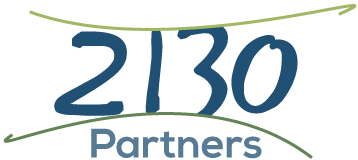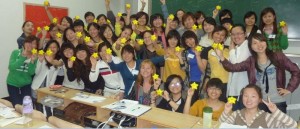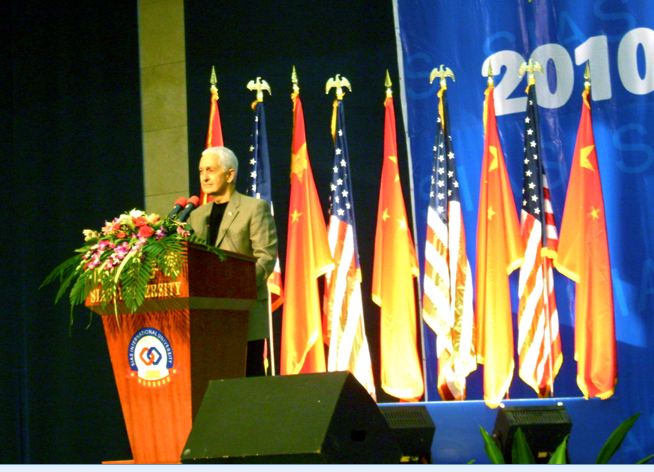
Leadership and the Self-Fulfilling Prophecy
 What I have been seeing in the past six weeks or so among my clients is what I would call, "The Paradox of the Double Dip." Let me explain. As you all know the economy and financial markets crashed badly. In March we saw "the low" and the economy was supposed to be on the road to recovery. Now we are seeing another down trend and the term "the double dip" is being discussed - meaning a second dip that might indicate the economy is not actually on the road to recovery after all. I am hearing "the sky is falling" from a variety of people about what's happening. I am also hearing comparisons to the '80s when we had the S&L scandal and Japan's economy tanked. The US recovered from the S&L scandal and cleaned up its mess. Japan did not recover in the same way and in fact is still experiencing repercussions because of the actions they did not take. In the current scenario we are being compared to Japan and the fear is our economy is going to be a mess for an undetermined length of time.
The problem with all of this from a leadership standpoint is that instead of Napoleon Hill's "Think and Grow Rich" we are in a "speak and grow poor" mentality and this will become a self-fulfilling prophecy.
What I have been seeing in the past six weeks or so among my clients is what I would call, "The Paradox of the Double Dip." Let me explain. As you all know the economy and financial markets crashed badly. In March we saw "the low" and the economy was supposed to be on the road to recovery. Now we are seeing another down trend and the term "the double dip" is being discussed - meaning a second dip that might indicate the economy is not actually on the road to recovery after all. I am hearing "the sky is falling" from a variety of people about what's happening. I am also hearing comparisons to the '80s when we had the S&L scandal and Japan's economy tanked. The US recovered from the S&L scandal and cleaned up its mess. Japan did not recover in the same way and in fact is still experiencing repercussions because of the actions they did not take. In the current scenario we are being compared to Japan and the fear is our economy is going to be a mess for an undetermined length of time.
The problem with all of this from a leadership standpoint is that instead of Napoleon Hill's "Think and Grow Rich" we are in a "speak and grow poor" mentality and this will become a self-fulfilling prophecy.
When asking clients how business is going right now I hear a range from "it's a good year," to "it's a record year." These are statements based on financial facts. However, the "looming crisis" conversations are not based on facts, but on fear and speculation and there in lies the paradox - things are going well for many on multiple fronts and yet there is a belief taking root that it's all going away.
This brings up one of the most important lessons for leaders to learn - it's critical to understand that when fearful concerns and speculations are put out there it alarms the troops, which changes their behavior and the self-fulfilling prophecy is triggered. One of the foundational pieces of our philosophy at 2130 Partners is our set of Operating Principles. One of these Principles is "Be Responsible for What Gets Heard."
One of the foundational pieces of our philosophy at 2130 Partners is our set of Operating Principles. One of these Principles is "Be Responsible for What Gets Heard."
From a leadership perspective it's critical that executives recognize when they are spreading fear. Leaders create "an emotional wake," (as our friends at Fierce, Inc. would say), just like boats leave a wake on the water. When leaders speculate in a negative tone and leave a wake of fear there are significant consequences. A frightened team is not going to be bold, innovative and confident. They are not going to be high-functioning and highly capable. Leaders need to be clear what emotion they are triggering within their troops - confidence, or fear and be responsible for it.
Does this mean leaders should just be pollyanna positive and "paint the world pink" all the time? Of course not, but leaders do need to realize the power of their words, the emotional wake they create and learn to be responsible for what gets heard.
Is There A Common Global Language For Leadership?
 Have you ever wondered whether there is any common language that exists for all humans and, if so, how knowing about that language might help you be a more effective as a leader? Well, there is and researchers have called it “deep metaphors.”
In the November/December 2008 issue of Spirituality & Health magazine, Managing Editor Betsy Robinson’s article, "Our Common Language," offers a very insightful summary of work done by Harvard Business School professor and sociologist Gerald Zaltman, Ph.D. and his team across 12,000 in-depth interviews in more than 30 countries.
Have you ever wondered whether there is any common language that exists for all humans and, if so, how knowing about that language might help you be a more effective as a leader? Well, there is and researchers have called it “deep metaphors.”
In the November/December 2008 issue of Spirituality & Health magazine, Managing Editor Betsy Robinson’s article, "Our Common Language," offers a very insightful summary of work done by Harvard Business School professor and sociologist Gerald Zaltman, Ph.D. and his team across 12,000 in-depth interviews in more than 30 countries.
Dr. Zaltman and his son, Lindsay Zaltman, have described their research in their book Marketing Metaphoria: What Deep Metaphors Reveal About the Minds of Consumers. While the consequences for marketing are dramatic, today we are more interested in how a working understanding of these metaphors will assist you in your leadership, your skill at conflict resolution, and your understanding of and ability to clear upsets.
According to Robinson, these deep metaphors are unconscious, universal, basic frames or orientations we have to the world around us. In the language of the work of 2130 we’d call it "the instant, automatic, and largely unexamined context or paradigm in which you live your life." The researchers have identified seven main lenses:
1) Balance – justice, equilibrium, interplay
2) Transformation – change in state, status, substance, circumstance
3) Journey – meeting of past, present and future
4) Container – connotes inclusion or exclusion
5) Connection – relating to oneself & others
6) Resource – source of support
7) Control – sense of mastery, vulnerability, well-being
and four subsidiary ones:
1) Movement or Motion – related to journey
2) Force – power that can compel or constrict
3) Nature – not from humans, growth and evolution
4) System – gives order
If you’d like a visual experience of these lenses, go to: http://www.youtube.com/watch?v=2exh6i6T6tg
Two very important dimensions of this work are the emotions and beliefs that we have connected with each of these deep metaphors and the fact that we cannot express ourselves without using the metaphors. Put simply, our conversations are full of phrases, which arise out of these metaphors, and they all have emotional baggage with them. Since we all use the same deep metaphors when relating to the same situations, it is the emotions that we have historically attached to each that yield the connecting or conflict that arises from each conversation. In our 2130 Partners' language, this is the "stuff that fills our File Cabinets."
Your ability to resolve conflicts, dispel upsets, and be an effective, productive leader will all be greatly enhanced by learning about and observing these deep metaphors in the situations you encounter. Robinson offers several helpful practices and exercises:
1) Make a list of the emotions and beliefs you have associated with each metaphor.
2) When you are in the middle of conflict, realize that there are deep metaphors at work and the parties have differing, perhaps extreme, emotions and beliefs associated. Find a way to appreciate the others’ basis in the conversation.
3) Find a way to sketch out a shared vision for the parties – what would life be without the conflict? In 2130 Partners we call this finding a Shared Yonder Star for the conversation and the relationship. Where will we be when it all turns out? Build a productive conversation from that commonality.
While it may seem difficult or awkward at first, viewing your encounters through the lens of deep metaphors and appreciating the generally unconscious, unexamined and often differing emotions and beliefs associated will almost certainly increase your conversational capacities and your ability to lead effectively.
Are We Having Fun Yet?
 In the realm of leadership the conversations are almost always quite serious. We discuss characteristics and traits like integrity and core values and mission statements for guiding teams of people. We review how leaders make mistakes, and how they fail. Process improvement, ROI, P&Ls, the list goes on. One topic that rarely comes up is “fun.” And why would it? Leadership is serious stuff right? Profits are at stake. People’s livelihoods are dependent on the successful outcomes of business plans. Fun is “frivolous” and has no place in conversations about important topics like leadership – or does it?
Culturally we are a very driven society. There is a push to succeed, particularly on an individual basis. In business this often translates to company cultures of, “if you are car isn’t in the parking lot on Saturday, don’t bother coming back to work on Sunday” which translates to 60, 80, or even 100 hour work weeks. The thing is high levels of stress are well-documented to break us down and cause serious health problems. Over-worked, exhausted people are less likely to be creative, innovative and productive and are more likely to be out sick.
In the realm of leadership the conversations are almost always quite serious. We discuss characteristics and traits like integrity and core values and mission statements for guiding teams of people. We review how leaders make mistakes, and how they fail. Process improvement, ROI, P&Ls, the list goes on. One topic that rarely comes up is “fun.” And why would it? Leadership is serious stuff right? Profits are at stake. People’s livelihoods are dependent on the successful outcomes of business plans. Fun is “frivolous” and has no place in conversations about important topics like leadership – or does it?
Culturally we are a very driven society. There is a push to succeed, particularly on an individual basis. In business this often translates to company cultures of, “if you are car isn’t in the parking lot on Saturday, don’t bother coming back to work on Sunday” which translates to 60, 80, or even 100 hour work weeks. The thing is high levels of stress are well-documented to break us down and cause serious health problems. Over-worked, exhausted people are less likely to be creative, innovative and productive and are more likely to be out sick.
So what does fun have to do with it? Enter Tony Hsieh, CEO of Zappos.com. He is leading one of the most successful companies in America and his focus is on happiness – for his customers AND his employees. Here’s a quote that’s typical from articles about Hsieh and Zappos:
“And yet, this mild-mannered fellow leads a company that is entirely uninhibited. Interviews are held over vodka shots, bathrooms are plastered with "urine color" charts (ostensibly to ensure that employees are hydrated but also just to be weird and funny), and managers are encouraged to goof off with the people they manage….
Hsieh tries his best to keep up with the goofy, libertine culture. Every day, he blasts a steady stream of playful messages to 350,000 people on Twitter. (Before taking the stage at a conference earlier this year, he posted this missive: "Spilled Coke on left leg of jeans, so poured some water on right leg so looks like the denim fade.")” (quote from Inc. interview)
Hsieh’s approach to business is radical. He sits with his employees rather than in “an important office,” and he encourages their creativity and “goofy fun” daily. Of course there is more to his approach than having fun, but it is a critical piece of the formula and an element that is seriously lacking in American business these days.
Many companies have “enforced fun” like the annual company picnic, the annual Holiday Party and su ch. These events are often met with reactions ranging from “this is annoying, but I have to go,” to all out dread by employees and feel unnatural since they aren’t in sync with the daily culture. Employees often attend to be sure they get their “points” and to be seen as being loyal and enthusiastic, (whether they really feel it or not).
ch. These events are often met with reactions ranging from “this is annoying, but I have to go,” to all out dread by employees and feel unnatural since they aren’t in sync with the daily culture. Employees often attend to be sure they get their “points” and to be seen as being loyal and enthusiastic, (whether they really feel it or not).
So what would happen to America and American business if we “lightened up?” What would happen to you as a leader if you allowed yourself to have fun? You may argue this wouldn’t be natural for you, but according to reports, it’s not natural for Tony Hsieh either. He is described as a fairly shy, reserved person, yet he pushes himself out of his personal comfort zone because he understands the bigger picture benefits to his company and business.
What would happen if you not only allowed, but encouraged your employees to have fun? What if fun wasn’t once or twice a year “because you should,” but it was a daily part of coming to work? Might be worth experimenting with this one…
5 Top CEO Challenges
 In May I was forwarded an email written by Shama Kabani (@Shama). [She runs an online marketing firm in Texas and is also the author of Zen of Social Media.]
Here is the opening of the email: “I just got back from The Leaders of Tomorrow conference at St. Gallen in Switzerland. It was a fantastic trip, and I gleaned some great nuggets of business wisdom from the world's best. One particular session I really enjoyed was presented by McKinsey partner Dominic Barton. As someone who spends much of his time with the CEOs of the world's leading companies, he shared 5 insights from his experience.”
In May I was forwarded an email written by Shama Kabani (@Shama). [She runs an online marketing firm in Texas and is also the author of Zen of Social Media.]
Here is the opening of the email: “I just got back from The Leaders of Tomorrow conference at St. Gallen in Switzerland. It was a fantastic trip, and I gleaned some great nuggets of business wisdom from the world's best. One particular session I really enjoyed was presented by McKinsey partner Dominic Barton. As someone who spends much of his time with the CEOs of the world's leading companies, he shared 5 insights from his experience.”
First, I was fascinated to discover this St. Gallen Summit as I wasn’t aware of it. Second I was really struck at the list of insights  coming from McKinsey and recapped by Shama in her email. I found them compelling because in addition to my role as Principal and Co-founder of 2130 Partners I am also a Best Practice Chair at Vistage International. Vistage is the world’s leading CEO membership organization and I have worked with them for more than 16 years. I can say the 5 insights offered by Kinsey below are very consistent with my experience of the CEO population. Here they are with notes from me included.
coming from McKinsey and recapped by Shama in her email. I found them compelling because in addition to my role as Principal and Co-founder of 2130 Partners I am also a Best Practice Chair at Vistage International. Vistage is the world’s leading CEO membership organization and I have worked with them for more than 16 years. I can say the 5 insights offered by Kinsey below are very consistent with my experience of the CEO population. Here they are with notes from me included.
1) They struggle with loneliness - The higher you get, the harder it is to find the right sources to trust. This is a fundamental reason for the success of Vistage. Having access to a peer group and being able to work issues with people who face the same types of challenges you do every day can be amazingly helpful for a top leader.
2) Lack of time - CEOs continue to balance an overflowing plate and prioritizing becomes key. This is something everyone is facing these days from the top office throughout an organization. We have found that the key issues here are in the “human dimension”- meaning that things often get slowed down between people through miscommunications, misunderstandings and upsets. This is why we developed our Productive Interactions program and why we have developed the concept of Lean Conversations.
3) Appetite for cross-sector knowledge - CEOs and companies across the globe are looking at what they can learn from industries other than their own. Cross-pollination at its best. What can marketers learn from HR? What can IT learn from sales? This is another area we find that communication is critical and is not happening at an optimum level. Often groups, teams, and departments become “silos.” There is usually a lot that can be learned by an organization and its leaders from within, from its own people. The challenge is opening up the flow for that to happen.
4) Understanding transitions - Leaders transition in and out of positions, jobs, and companies. They are consistently looking for help with these transitions. This is where a solid, experienced Executive Coach can really add value. Transitions are often fraught with emotions and complexities. Hiring a partner to help you through is key.
5) The battle for talent - The biggest competitive advantage of any company in the future is going to be people. Often CEOs don't know the scope of talent available to them within their own company. This is a source of frustration for many. See point number 3 above. It is amazing how much knowledge and information inside a company does not flow. Again, challenges in the “human dimension” often hinder this flow. Fear, politics and other factors can keep key information like “how talented is your talent pool” from being clear to those at the top.
Bottom line, from our perspective at 2130 Partners, for CEOs to manage these top 5 challenges, investigating and investing in the “human dimension,” is the place to work. The greater the skills and capacities CEOs and those on their teams have to effectively and efficiently communicate and create results, the less painful these 5 challenges become.
What Can You Own?
 Does the oil mess in the Gulf of Mexico outrage you? Are you saddened by the recent mine disasters? Are you distressed by the air and water pollution we see on the news or in person if you travel much? Do you drive a car, have air conditioning and heating, and/or fly much?
Here’s the biting part – you & I are causing all of these unhappy circumstances. Granted, for most of us our role is somewhat indirect. However, there would be no oil drilling, coal mines, refineries or plastics manufacturers if we didn’t buy and use the products to facilitate the lifestyles we enjoy. Being angry at the owners and executives of the companies involved makes sense on one level, but on another level it is a way to push responsibility off on someone else and comfortably go on with our lives. Large, complex systems will fail periodically, despite our best human intentions. There will be crashes, fires, stock market plunges, and on and on. We are all part of the large complex systems we live within and use to continue our lives as they are. It’s critical we examine this from a larger lens. It’s also important that we start to open to the idea that no matter how small, we do have a role in these large systemic failures that seem to be someone else’s fault.
Does the oil mess in the Gulf of Mexico outrage you? Are you saddened by the recent mine disasters? Are you distressed by the air and water pollution we see on the news or in person if you travel much? Do you drive a car, have air conditioning and heating, and/or fly much?
Here’s the biting part – you & I are causing all of these unhappy circumstances. Granted, for most of us our role is somewhat indirect. However, there would be no oil drilling, coal mines, refineries or plastics manufacturers if we didn’t buy and use the products to facilitate the lifestyles we enjoy. Being angry at the owners and executives of the companies involved makes sense on one level, but on another level it is a way to push responsibility off on someone else and comfortably go on with our lives. Large, complex systems will fail periodically, despite our best human intentions. There will be crashes, fires, stock market plunges, and on and on. We are all part of the large complex systems we live within and use to continue our lives as they are. It’s critical we examine this from a larger lens. It’s also important that we start to open to the idea that no matter how small, we do have a role in these large systemic failures that seem to be someone else’s fault.
So what are we to do, or, perhaps more powerfully, who are we to be in the matter? How do we, as leaders, relate to these seriously troublesome issues of our time? I don’t know if anyone truly has the answers, but I suspect the power may lie in the questions themselves. I keep listening and looking for actions that are the most responsible I can take while continuing to own and be present to the realities of our world, where things are headed with our collective humanity, and the consequences if we don’t own our actions and change directions.
I’m also interested in how this same idea applies to other areas of our lives. What other parts of life are too difficult to face? What is happening in your organization that you refuse to be responsible for in the bigger scheme of things?
 Consider the possibility that stepping up and owning it all may provide new access to solutions and strategies you had not seen before. You may find that owning it all even gives you a new sense of freedom – the freedom to be with the good the bad, and the ugly without suffering about it. The suffering may all come from resisting the way that it is and the way that it isn’t rather than because if it.
Consider the possibility that stepping up and owning it all may provide new access to solutions and strategies you had not seen before. You may find that owning it all even gives you a new sense of freedom – the freedom to be with the good the bad, and the ugly without suffering about it. The suffering may all come from resisting the way that it is and the way that it isn’t rather than because if it.
Your inability to cause change where you’d like to see it may be similar. Instead of examining the condition, you may be caught up in complaints, judgments, opinions, and all the other noise around almost every condition these days. What if you give all that up and free yourself to turn your focus to discovery? Would you be unleashed to be creative and interact in a real problem solving way with others? What if you spend time asking questions and examining the “unfaceable conditions” instead of denying, ignoring, judging or being angry about them? Why not give it a try? See what happens if you are willing to be 100% responsible for everything in your life and for everything going on around you. Experiment with questions and curiosity. You might be surprised at the results.
Leading a Meaningful Life
Author's Note: Building on last week's blog post which was my key note speech at a Women's Symposium in China I am posting the talk I am giving to the same group of Chinese Women Leadership Students for an upcoming break out session.
 In the opening ceremony, I did a quick scan of the global picture of women’s leadership in the highest positions. I outlined a simple process to follow to make you most effective in your pursuits. I then pointed out a series of qualities for you to bring to your work to be successful. Lastly, I addressed the requirements for men to be most supportive of a woman's passion and purpose. I declared that in the end both women and men must listen to their hearts and trust themselves. Identify your vision or "Yonder Star" and the path to it and get to work! Be courageous, authentic, collaborative, compassionaite, patient and persistent. The joy in in the journey and the learning along the way.
In the opening ceremony, I did a quick scan of the global picture of women’s leadership in the highest positions. I outlined a simple process to follow to make you most effective in your pursuits. I then pointed out a series of qualities for you to bring to your work to be successful. Lastly, I addressed the requirements for men to be most supportive of a woman's passion and purpose. I declared that in the end both women and men must listen to their hearts and trust themselves. Identify your vision or "Yonder Star" and the path to it and get to work! Be courageous, authentic, collaborative, compassionaite, patient and persistent. The joy in in the journey and the learning along the way.
In this session, let’s dig deeper. Let’s get down to what it’s really going to take to live a life you love and produce outcomes that have you shouting “YES!”
As you will experience, life gets harder in the middle as things like jobs, family, housing, school, and medical expenses take your energy. It will be hard to remember what you said you were committed to when you were in college. You have to step out into the world and be defeated a few times to test your resolve. Can you get back up, shake yourself off, and continue to pursue your vision or will you step to the side and only make gestures? Will you let your circumstances or situation determine your life and just complain about it? Perhaps you will just suffer in silence, hoping you can do better in your next lifetime? Do you know anyone like that? They didn’t plan their lives to turn out that way! So what happened?
Life happened. Circumstances happened. As you go along, the evidence and the agreement of others stacks up about how hard it really is to make a difference. In your lifetime it will be even more challenging. In an age of uncertainty, rapid change, volatility, the rapid spread of instant information, and the breakdown of traditional practices and culture, it will be more confusing than ever.
I see all of this as great news for you. The more the past ways are losing their grip, the more freedom you will have to innovate and the greater that demand will be for your courageous leadership. Please note an emphasis on courageous and recall how I used David Whyte’s definition of courage in the opening ceremony, “developing a friendship with the unknown.” Why is that so important?
When the pressure is on and circumstances are pressing in on you, it is very normal to fall back to what you know from your past. The problem for leaders is that your past won’t help when what you need to accomplish your Yonder Star are bold new strategies and partnerships that are different from past practices. To get your passion and purpose back on the path to leadership, you will have to get comfortable with not knowing what to do. You will have to stay uncertain long enough to discover new strategies and new team members that can lead you beyond the world you and others knew and find comfortable. You will have to learn to become very comfortable with being uncomfortable!
 So let’s get specific. Here is an example of a really big vision or Yonder Star. Applicants for next year’s World Forum For The Future of Women were asked to write a brief essay on women's lives in a perfect world. Part of what one woman said was, “In a perfect world, women are really equal with men. They do not have to lose weight in order to get the praise of their boyfriends. A woman is a god of herself, not her boyfriend, family or someone else. She is totally free and her spirits are strong. She makes her own life colorful and has a say in society. She belongs to herself. She belongs to the world too. She thinks for the animals, the children, even our beautiful world. Her eyesight is so big. Life is full of ups and downs, but she always keeps her heart basking in the sun. She knows that every dawn will present a fine prospect for her to unfold and the world will always be about new hopes in her eyes.”
So let’s get specific. Here is an example of a really big vision or Yonder Star. Applicants for next year’s World Forum For The Future of Women were asked to write a brief essay on women's lives in a perfect world. Part of what one woman said was, “In a perfect world, women are really equal with men. They do not have to lose weight in order to get the praise of their boyfriends. A woman is a god of herself, not her boyfriend, family or someone else. She is totally free and her spirits are strong. She makes her own life colorful and has a say in society. She belongs to herself. She belongs to the world too. She thinks for the animals, the children, even our beautiful world. Her eyesight is so big. Life is full of ups and downs, but she always keeps her heart basking in the sun. She knows that every dawn will present a fine prospect for her to unfold and the world will always be about new hopes in her eyes.”
Does that Yonder Star call to you? What do you think it will take to make that vision real in the world? If it fits you, what will you have to change about yourself and the way you have dealt with life in the past? If you answered “I don’t know,” you are wise. No one knows today what it will take to fulfill such a bold vision. To be successful with such a vision, you will learn to become comfortable with being uncomfortable or not knowing.
The other critical aspect of being able to fulfill your Yonder Star is to make it very, very public and develop lots of partners in your vision. The more people you include, the more creative input you will get. More importantly, there will be more people to remind you about your commitment when you forget.
Now I want to remind you that the only powerful vision or Yonder Star for you is the one you choose. No project is too big or small if it is truly yours. This is one of the hard parts of leadership. There are so many social agreements on what’s right or wrong or what gets recognition at the moment and what does not. Unfortunately, many really important ideas are not appreciated by others when they are created. Many famous artists, for example, died before their work was recognized and many social reformers never lived to see the improvements that came from their lifetime of commitment and hard work.
You cannot live a life of true significance and also worry about whether you are getting lots of credit at the moment. You will have to find other sources of strength. You will have to become completely comfortable with your own vision and ideas and completely willing to own the consequences of your actions and inactions. You will have to be completely willing to deal with your circumstances.
For the women in the audience - to be a visionary, you will have to be very patient. It may be a struggle to bring men along with you on your path. Some of you may find it easier to stay single and simply focus on your work. In some ways that will make your life much simpler. On the other hand, you will miss out on many of life’s joys including children and real partnership.
 For the men-if you intend to be a partner with a highly committed and passionate woman leader, be prepared for surprises. At times, your emotions may swing from very excited to wanting to give up. To be an equal partner will mean that much of what you have learned by listening and watching other boys and men while you were growing up will not be valid or useful in partnering. These old ways of relating to women may even cause you great pain.
For the men-if you intend to be a partner with a highly committed and passionate woman leader, be prepared for surprises. At times, your emotions may swing from very excited to wanting to give up. To be an equal partner will mean that much of what you have learned by listening and watching other boys and men while you were growing up will not be valid or useful in partnering. These old ways of relating to women may even cause you great pain.
For both of you, your guide will be the Yonder Star vision you share and your respect and love for each other. Beyond that, you and your partner will both be on a path of exploration. If you are frequently uncertain or confronted, you are probably doing the right work. If you are very comfortable, you may not fulfill your vision!
So what I have talked about are one or two very basic ideas it will take for you to be truly successful in fulfilling your Yonder Star or vision. It will be hard at times. It will take courage. You will forget your vision, you may not be able to find your commitment, and will have to be reminded. Your relationships can often be confronting, frustrating, or just disappointing. Discovering the joy and satisfaction of equal partnership as you express your passion and purpose on the path to leadership will make it all worthwhile.
As I summarized in my keynote it will ultimately come down to listening to your heart and trusting yourself. Identify your Yonder Star and the next steps on your path to fulfilling it and get to work. Be courageous, authentic, collaborative, compassionate, patient, and persistent. The joy is in the journey and the learning along the way. Be thankful that you are one of the people who will have the opportunity to live a meaningful life!
Putting Your Passion and Purpose on the Path to Leadership
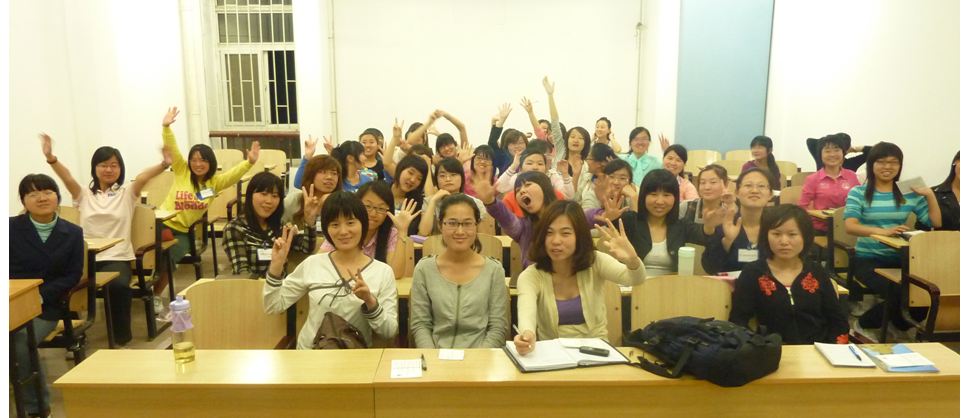
This week I am privileged to be speaking to the women of The World Academy for the Future of Women at SIAS International University in Xinzheng City, Henan Province, People’s Republic of China. For the past 18 months or so we have been working with Global Interactions and their President Jerrie Ueberle, (as well as others), to co-create curriculum and a program for The Academy. In conjunction with this, their 4th Annual Women's Symposium is also being held and my speech will be part of that symposium. Suzanne and I will be teaching at The Academy and participating in the symposium. This project has had an enormous impact on us here at 2130 Partners and has been an amazing learning experience.
The symposium is titled "Women Making a World of Difference: Putting Your Passion and Purpose on the Path to Leadership" and I was asked to address the subject of "Being Heard In A Man's World." I have to confess to some trepidation to doing this speech. What do I as an older Western male have to say to brand new graduates of a women's academy in China? I thought long and hard about this. Given my more than 30+ years experience as an investor activist for the end of world hunger I firmly believe the education and empowerment of women around the world is absolutely crucial to our collective global future. So after much reflection, here is the speech I will be giving:
Putting your Passion and Purpose on the Path to Leadership will require that you speak up, take risks, and be heard to move your goals from a dream to reality. You will not be alone! Bold women around the world are stepping up and challenging traditional ways, with major consequences at the individual, family, community, and societal levels. They are insisting on being heard in a world where women’s voices have long been marginalized or ignored.
Pursuing your path to fulfillment will bring you up against many barriers and pitfalls and will require you to deal with things you can barely imagine now.
Today, I will outline a simple process to follow to make you most effective in your pursuits. I will then point out a series of qualities for you to bring to your work to be successful. Lastly, I will address what will be required of men to be most supportive of you passion and purpose. The work is hard and confronting, however, the satisfaction and rewards are enormous.
Women are clearing a path for you by moving into top leadership roles on a worldwide basis, more so in government than in large corporations. With the recent election of Laura Chinchilla as President of Costa Rica, the world has 26 women heads of state and government. India passed a law in 1993 that required that 33% of all positions in local government, called Panchayati Raj, be women. That law has allowed 1,000,000 women at the local level to take on leadership roles in their communities, which means more women in public office in India than in all of the reset of the world put together. In addition, the Indian Parliament is currently debating a new law that would extend the 33% requirement to the national level in its own lower house. China has 21% women in its National People’s Congress. By contrast, the percentage of women in the US Congress and State Governors positions averages 17%. Representation of women among top corporate executives in the 1,000 largest US firms averages 15.7%. While these numbers still don’t reflect the fact that women make up one-half of the world’s population and “hold up half the sky,” they do represent a significant number of women in influential roles.
As women achieve more powerful roles and higher incomes, however, a combination of old and new threats must be dealt with. Traditional cultural practices are still producing great discrimination against women and girls, from employment and educational opportunities right down to the aborting of female fetuses and abandonment of female babies in very large numbers. Estimates are that there would be over 100 million more women in the world if this were not taking place. In addition, fundamentalist religious sects are going to great lengths to suppress women across the world. At the personal level, pressures for conformity to old ways exist in every community.
So what is the appropriate action?
First and foremost, you must pay close attention to these existing conditions we’re talking briefly about here today. The work you will do to successfully fulfill your vision will take place in these conditions. To be effective, you cannot wish them away, simply ignore them, or fight violently against them.
The process that will make you most effective is simple but it is not easy:
1)Develop a very clear expression of what your purpose and passion look like in the world when fully expressed. In our company we call that your vision or your “Yonder Star.”
2)Make full, clear, and accurate account of the conditions that exist and in which you will be working.
3)Ask “what’s missing from my picture of my fulfilled vision today?” “Which of those issue would produce the most results in the shortest time and with the least effort if I get to work on it?”
4)Design projects to address that issue and get to work.
5)Monitor progress and redesign as necessary to fulfill your projects.
6)Keep going until you are building capacities and moving successfully toward your vision.
Remember, the key to effectiveness is to have your vision, pay attention to current circumstances, and focus your work in the gap between the two.
What will be required of you?
1) First and foremost, summon your courage. The courage that will be most valuable is what author and speaker David Whyte calls “developing a friendship with the unknown.” Once you start on your path, you will have left your traditional, familiar surroundings and ways of relating to others and will be in unknown territory. If you are unwilling to be in that state and learn to become comfortable with being uncomfortable, don’t bother to get started. You will be stepping out of historic roles and relationships and you will be insisting on what can and must be done to produce meaningful change.
2) Second, you must be willing to accept the consequences of your actions. This does not mean, “be a victim.” It simply says that all actions and even failure to act have consequences. To be free to act effectively, you must be aware of the potential consequences and feel that the results are worth it. You must give up avoiding being criticized or thought of as weird. You will have to deal with rejection and pushback without taking it personally. The questions to ask are “what stops me now?” “Am I willing to focus on my vision and go past that barrier?” “Am I willing to have all of the consequences and not just the ones that are safe or that I call good?”
3) Third, focus on collaboration. Develop strong alliances with other women who share your objectives. Work together and support each other, especially when your courage is faltering, you can’t find your passion, and your purpose is blurred. Find courageous men and teach them how to be your partners. It won’t work to make men wrong, as that will just create a wall of resistance. Success will involve teaching and enrolling them in how they will be better off by collaborating with you. It works – my wife and I are living examples of equal partners who make great contributions to each other and our clients and community.
4) Fourth, summon compassion. When you are causing change, some of the people around you, both men and women, will be threatened. They won’t necessarily understand what you are doing or why. Your family members may fear for your safety or that you will leave them. Others may have their beliefs threatened or feel that they will be harmed in some way. Change of any kind, even good change, is an upset for people. Forgive them for their resistance and help them understand the benefits.
5) Be patient. Allow those around you to re-shape their relationship with you and with the changing roles of women in general. Balance the rate at which you are attempting to accomplish your work with their ability to absorb the changes you are bringing.
6) Develop and maintain your clarity- how do you intend your life to unfold? What is the best path for expressing your passion and purpose? Remember, it is your life, so any path you freely choose is fine. There are no right answers other than that!
7) Be authentic. The world has actually been waiting for you. Be fully yourself, fully self-expressed, and let the world choose how much of you it wants and for what roles. You are the only person who has been genetically encoded to deliver what you offer by being fully you.
8 Be persistent. You will be amazed at how many excuses and seemingly very good reasons you will come up with to change or give up. Stay on your path (strategy) or get back on it when you stray.
9) Surrender. If you have a really big passion and purpose, you will be immediately and often confronted by thoughts like “I’m insufficient,” “I don’t know how,” “I’m scared to death,” and “I’ll never get good enough fast enough to reach my Yonder Star!” Success will require that you reach out to find team members and identify successful strategies. When you get stuck, ask, “Who are my missing team members?” and “What are the missing strategies?”
What does this require of men?
1) Enlightenment. To receive the benefits of having powerful, effective women in their lives, men will have to be willing to be open to the opportunity and to not know how it is going to turn out. They will have to suspend their instant, automatic, and unexamined beliefs about women and the roles women should play. They will have to be present to the opportunities before them.
2) Recognition. To be able to partner effectively with women and benefit from their newfound power, men must realize and own that they discount or ignore women’s voices. This will be extremely difficult for many men, as they do not realize that they do it currently. The adjustment may be threatening or painful and they may experience a sense of loss.
3) Courage. Men who step up to being real partners with women may still face times when they feel threatened by the situation or the strength of the woman or women around them. Further, they may have to stand the ridicule of other men who see them as weak or stupid. As with women, it will require developing a friendship with the unknown. They won’t necessarily know what to expect from women or how to handle what is being said or done to them.
4) Action. In addition to all else, men will have to see and act on the opportunity offered by being in equal relationship with women whether as romantic partners, co-workers, or members of their community.
Ultimately, for both women and men, it will come down to listening to your heart and trusting yourself. Identify your Yonder Star and the path to it and get to work. Be courageous, authentic, collaborative, compassionate, patient, and persistent. The joy is in the journey and the learning along the way. Go forth and prosper!
Are You Available?
 In a rather reflective one-to-one the other day, one of our clients said, “Your availability in a world where nobody is ever available, (mentally, emotionally and physically), is greatly appreciated.” This comment has unleashed a whole inquiry in which I have been examining the implications for my life and work. What does it mean "to be available" to others? Particularly if you are a leader?
At the Individual Level
If you look at your individual availablity in the first person, meaning from the "I" level. What does it mean? When I consider it, the questions that come up for me are: "Am I present to the day – to the sights, sounds, and sensations of the physical world? Do I notice the birds singing, the waves rolling up on the beach, the sun and moon rising or setting, or the sea lions barking in the middle of the night? If I do, how do I interact? Do I miss it all because I’m lost in my own thoughts, opinions, judgments, etc.? How would it change my life and well being if I got very, very conscious and dramatically increased my experiences of these things?"
In a rather reflective one-to-one the other day, one of our clients said, “Your availability in a world where nobody is ever available, (mentally, emotionally and physically), is greatly appreciated.” This comment has unleashed a whole inquiry in which I have been examining the implications for my life and work. What does it mean "to be available" to others? Particularly if you are a leader?
At the Individual Level
If you look at your individual availablity in the first person, meaning from the "I" level. What does it mean? When I consider it, the questions that come up for me are: "Am I present to the day – to the sights, sounds, and sensations of the physical world? Do I notice the birds singing, the waves rolling up on the beach, the sun and moon rising or setting, or the sea lions barking in the middle of the night? If I do, how do I interact? Do I miss it all because I’m lost in my own thoughts, opinions, judgments, etc.? How would it change my life and well being if I got very, very conscious and dramatically increased my experiences of these things?"
Pushing it a bit further, consider this from a leadership perspective: "Am I available to hear what those around me are saying that could accelerate the quality of my experience, my life, and even my strategic direction? Am I willing to be impacted by the things that people who care about and appreciate are saying to me/about me? Would I be a bigger person? How much richer might life be and how big would I play?"
At the Relationship Level
If you consider your availability in your relationship to others, at the level of "we," what does that mean? When you are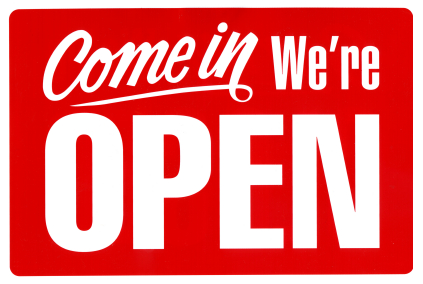 interacting with others, can you be fully available to them? What would that mean? How can you do that, given all of your commitments? Does this seem overwhelming? What if being available has nothing to do with time or space and only to do with how present and open you are? How quiet your mind gets so you can hear what others are saying, whether it’s in person, on the phone or even in an email or text? Rather than rattling around with your own thoughts and feelings, what if you just really listened, and asked questions and didn’t judge?
interacting with others, can you be fully available to them? What would that mean? How can you do that, given all of your commitments? Does this seem overwhelming? What if being available has nothing to do with time or space and only to do with how present and open you are? How quiet your mind gets so you can hear what others are saying, whether it’s in person, on the phone or even in an email or text? Rather than rattling around with your own thoughts and feelings, what if you just really listened, and asked questions and didn’t judge?
With clients and colleagues, can you listen newly to them or are you just listening to the noise in your head about what you are going to say next? Are you focusing on what you think about what they are saying, or whether they are on the right or wrong path? What if you weren’t coming from knowing, rather just being there for them, being a generous listener, and asking questions that perhaps help them gather their own thoughts more clearly?
"Available" - What Does It Really Mean?
According to the Answers.com dictionary it means:
1. Present and ready for use; at hand; accessible
2. Capable of being gotten; obtainable
3. Qualified and willing to serve or assist
4. Chemistry. Capable of being used in a chemical reaction
5. Botany. Present, as in soil, and capable of being used by plants as a nutrient
The more I consider these definitions the more I like them all when applied back to this inquiry.
I invite you to consider a commitment to being present and accessible, willing to serve and be used by another to cause a catalytic reaction in their lives, (remember your chemistry here: a catalyst causes a reaction and is not used up in the process), and to be a source of nourishment essential for growth and the maintenance of life.
The Powerful Role of Consequences When We Are Overwhelmed
 I recently attended a presentation of "High Performance: How To Get It. How To Keep It" by Greg Bustin at a Vistage meeting in Orange County. Greg packed a lot of material into his three-plus hour presentation geared around formal planning. The idea I really sparked to, however, was the notion of consequences.
In designing accountability systems, one of the commitments Greg has people do is agree to accept the consequences of their actions or inactions. I’ve been reflecting since on the implications of that simple statement. The dictionary offers two distinct definitions of the word "consequences" ; 1) something that logically or naturally follows from an action or conditions. 2) significance; importance. Of most interest to me is that the dictionary does not associate any good or bad to consequences and yet in everyday language I suspect the word has a lot of baggage, (negatives), associated with the word. I suspect many readers will even find the idea of "punishment" associated with the word consequences.
I recently attended a presentation of "High Performance: How To Get It. How To Keep It" by Greg Bustin at a Vistage meeting in Orange County. Greg packed a lot of material into his three-plus hour presentation geared around formal planning. The idea I really sparked to, however, was the notion of consequences.
In designing accountability systems, one of the commitments Greg has people do is agree to accept the consequences of their actions or inactions. I’ve been reflecting since on the implications of that simple statement. The dictionary offers two distinct definitions of the word "consequences" ; 1) something that logically or naturally follows from an action or conditions. 2) significance; importance. Of most interest to me is that the dictionary does not associate any good or bad to consequences and yet in everyday language I suspect the word has a lot of baggage, (negatives), associated with the word. I suspect many readers will even find the idea of "punishment" associated with the word consequences.
As I considered this idea of consequences, of accepting them, and of letting go of the "good/bad" judgments, I decided to play out this concept in my real life to see how it might apply.
The inquiry came to together for me around email. I get more email than I can handle and still have a life and my health. I have struggled with that for too long now. I see virtually all of our clients and Vistage members struggling with it. Why? I didn’t ask most of the writers to send me the email. What makes me think I absolutely must answer it? 
I realized that in my own internal dialogue there are messages that say something like “a good person would answer all of his email every day.” “People won’t like me if I don’t answer their emails.” “I won’t be respected if I don’t answer…” “I’ll be kicked out of the club if I don’t answer…” “There is one of those emails in that e-stack that has a zinger in it. If I don’t handle it, I’ll be screwed!” Etc., etc., etc. It's really an "inner critic" internal dialogue that is stirred up by the fear of negative consequences. This "critic attack" is part of the instant, automatic, and unexamined beliefs I have tied to performing and being liked or appreciated that are running the show.
I have not approached the outcomes of unanswered emails as simply outcomes - meaning consequences without baggage. I have been reacting to a negative significance or importance that I am essentially "making up" about not answering email or being very slow to answer. As a result of this exercise, I have decided I will give email my best shot within a larger set of priorities - attending to my work, my relationships, and my health and well-being. For all those emails that are answered very late or never, I am completely willing to accept the consequences. I will apologize or clean it up as necessary but I won’t sweat it. Having made the "unconscious conscious," (a Pat Murray notion –renowned Vistage speaker from the San Francisco Bay area), I can consciously choose to limit my time and energy devoted to email and simply be willing to have the consequences, free of any meaning I have been putting on it all.
I have found this to be a very "freeing" exercise and it occurs to me there are probably alot of times we are "overwhelmed," and what is really going on underneath is some type of fear related to negative consequences.
So how about you? Can you see any similar issues in your life that are driving a sense of overwhelm?
Sustainable Strategic Change
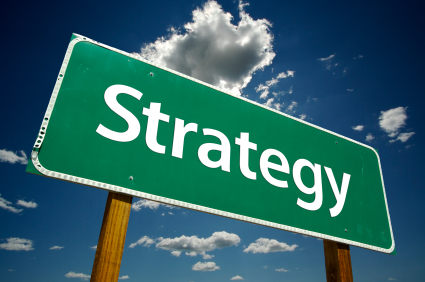 In a recent post we explored how the idea of the OODA Loop, created by US Air Force strategist, Colonel John Boyd, can clarify and focus strategic action. This week, we are once again drawing from a strategic military process. This time we are drawing on an approach from the new Army-Marine COIN, (Counter Insurgency), field manual that we learned about in an awesome book, Great Powers: America and the World After Bush, by Thomas P. M. Barnett. (We urge you to buy, read, and share this important work!)
As with the OODA Loop, we find the elegance of the summary of such sophisticated insight and thought truly exciting. From our work in 2130 Partners to our participation in the global non-profit The Hunger Project, we find that transforming an existing condition or paradigm is what is at the heart of real, meaningful and lasting change. Processes like the OODA loop and those in the COIN field manual can be used to alter paradigms. As summarized by Thomas Barnett, the COIN field manual outlines the process as:
In a recent post we explored how the idea of the OODA Loop, created by US Air Force strategist, Colonel John Boyd, can clarify and focus strategic action. This week, we are once again drawing from a strategic military process. This time we are drawing on an approach from the new Army-Marine COIN, (Counter Insurgency), field manual that we learned about in an awesome book, Great Powers: America and the World After Bush, by Thomas P. M. Barnett. (We urge you to buy, read, and share this important work!)
As with the OODA Loop, we find the elegance of the summary of such sophisticated insight and thought truly exciting. From our work in 2130 Partners to our participation in the global non-profit The Hunger Project, we find that transforming an existing condition or paradigm is what is at the heart of real, meaningful and lasting change. Processes like the OODA loop and those in the COIN field manual can be used to alter paradigms. As summarized by Thomas Barnett, the COIN field manual outlines the process as:
- Diagnose – environments’ deficits
- Dialogue – with locals about how to address them
- Design – programs
- Learn – from application
- Redesign – programs over and over until local capacity has been built up
As usual, the process is simple at its core and not easy in its real world execution.
In practice in your organization it looks something like this:
- With your strategic vision or "Yonder Star" clearly in mind, examine the present and ask “What’s Missing – from our Yonder Star today that is most important to work on?”
- Engage with your leadership team, colleagues, or fellow community leaders, regarding their insights and proposals. In working with The Hunger Project we say, “We stand with the hungry people as the solution, not the problem!” What shifts will occur if you relate to your associates the same way? In other words, how would you engage in conversations differently if you considered your employees, and colleagues as part of the solution, not the problem?
- Develop a shared understanding of the approaches, strategies, and actions that will have the highest leverage in moving towards fulfillment of the Yonder Star.
- Get to work and conduct regular reviews of effectiveness. What’s working and what’s not? Where is course correction called for?
- Redesign and redirect the action until desired results are happening.
- Engage with each other regarding the growth and development of team members individually and collectively. We call the shared knowledge and capabilities within the team "Collaborative Capacities."
We particularly call your attention to the last phrase of the COIN field manual “until local capacity has been built up.” To us, that is  the most critical notion of all when it comes to sustainability. Command-and-control leadership and traditional service delivery models for development are fatally flawed in this regard. If local collaborative capacity building has not taken place, whether in a village in Afghanistan, or on the factory floor, programs fall apart as soon as the "top down providers" leave.
the most critical notion of all when it comes to sustainability. Command-and-control leadership and traditional service delivery models for development are fatally flawed in this regard. If local collaborative capacity building has not taken place, whether in a village in Afghanistan, or on the factory floor, programs fall apart as soon as the "top down providers" leave.
Here are some thoughts to jog your thinking about how this model can help you lead:
How does this “formula” give you new access to diagnosing your individual and collective leadership challenges?
How can you apply the “formula” to altering your historic way of operating and fill in missing steps in the empowerment process?
Are you willing to take the “formula” and actually get to work on accelerating your productivity and the effectiveness of your interactions?
Have you given your full attention to collaborative capacity building with your executive team? Your employees?
The Pitfall of Self-Referencing Leadership
 In the process of growing up and becoming a successful leader, you most likely put together a set of well-developed values, beliefs, experiences, and capacities. You have probably done well at suppressing your emotions and demonstrating your rational thinking. Being successful means your mix has served you well; you have been rewarded, "bonused," and encouraged along the way. You have probably learned to rely on the way you interact, solve problems, and produce results to the point where the basis of your thinking, (your "paradigm"), is now instant, automatic, and unexamined.
To paraphrase the Peter Principle, you can expect to be promoted to your level of incompetence, (if you haven’t been already). This means that at some point,"the success train" of your career is coming to a halt. If you happen to own your own business, and are already at the top, it is likely to happen in the form of business expansion. In other words, your business will expand to your level of incompetence.
In the process of growing up and becoming a successful leader, you most likely put together a set of well-developed values, beliefs, experiences, and capacities. You have probably done well at suppressing your emotions and demonstrating your rational thinking. Being successful means your mix has served you well; you have been rewarded, "bonused," and encouraged along the way. You have probably learned to rely on the way you interact, solve problems, and produce results to the point where the basis of your thinking, (your "paradigm"), is now instant, automatic, and unexamined.
To paraphrase the Peter Principle, you can expect to be promoted to your level of incompetence, (if you haven’t been already). This means that at some point,"the success train" of your career is coming to a halt. If you happen to own your own business, and are already at the top, it is likely to happen in the form of business expansion. In other words, your business will expand to your level of incompetence.
How does this happen? Our belief is that as your work requires broader and broader reach and impact, the very traits and skills that got you rewarded and promoted to your next level of accountability, (or allowed you to create a successful business), can be what defeats you. You will be working with many more people who differ in their perspectives, learning styles, ways of processing information, and ways of interacting with others the bigger your career or business gets. In order to make the leap past the Peter Principle, you will have to expand your own skills and capacities.
Einstein’s oft-quoted statement “problems cannot be solved at the same level of awareness that created them” applies here. If you continue to rely solely on your own thinking and way of operating, (and why shouldn’t you since, after all, you are successful and you got here, didn’t you?), then you are in a place of "self-referencing  leadership," and that means the Peter Principle is "in effect." To continue to lead successfully, you will be required to think in new ways and benefit from the thoughts and perspectives of others. In other words, cherished self-reliance becomes obsolete. Collaboration, inclusion, openness, the ability to continue learning, respect of others' skills, expecting others to contribute - these are the traits that are critical to develop.
leadership," and that means the Peter Principle is "in effect." To continue to lead successfully, you will be required to think in new ways and benefit from the thoughts and perspectives of others. In other words, cherished self-reliance becomes obsolete. Collaboration, inclusion, openness, the ability to continue learning, respect of others' skills, expecting others to contribute - these are the traits that are critical to develop.
To collaborate successfully will require opening up to creativity, inspiration, and empowering others. Doing this will require developing the added dimensions of intuition, (gut feel), and heart-centered knowledge to your already highly developed intellect. (See last week's blog post on using all of your intelligence if this is a new concept.)
So bottomline, when success is at hand, and all the skills you currently possess have gotten you there, it's time to push yourself to expand. You must increase your capacities to collaborate with others and your "capacities of intelligence" if you are going to overcome the Peter Principle and continue to be a successful, and not merely self-referencing, leader.
Are You Using All of Your Intelligence?
 This may seem like a funny question, but do you know the answer? Are you using all of your intelligence? We don't mean "business intelligence" in the sense of consumer data, research and business results. We are talking about your own personal intelligence. You probably believe you "give it your all" and use all of your capacities and capabilities - but are you sure?
This may seem like a funny question, but do you know the answer? Are you using all of your intelligence? We don't mean "business intelligence" in the sense of consumer data, research and business results. We are talking about your own personal intelligence. You probably believe you "give it your all" and use all of your capacities and capabilities - but are you sure?
The fact is, there are three ways that we as human beings detect, receive and process information. There are three centers of intelligence - the head, the heart and the gut.
Our culture primarily values the head or intellect. Ever since the time of the philosopher, mathematician and physicist, Rene DesCartes, ("I think therefore I am"), the intellect has been prized as the center of our understanding, intelligence and knowledge.
However, at some level, we all know this belief is not quite accurate. For example, we know the heart provides us with key information. We have all heard the phrase, "I followed my heart," and we all immediately understand what that means. Think about that phrase for a moment. If the heart didn't provide us with information, how could we follow it? And if the information wasn't powerful, why would we follow it? It turns out that scientific studies about the power of the heart show there is an extaordinary amount of energy and information coming from and through the heart. In fact, there is now evidence that a type of neural tissue is present in the heart which indicates the heart and mind work together to process information. The Institute of HeartMath has been studying the power of the heart for years and we recommend looking into their work to find out more.
When it comes to the idea of the heart as a center of intelligence, there is some cultural ambivalence. On the one hand, we are suspicious. Isn't the heart "emotional?" Emotions "shouldn't be followed." They are "irrational" and that's not a good thing. Right? However, at the same time that we have this cultural concern, there has been alot of work done in the realm of emotional intelligence and its importance. Some have even stated that being "emotionally intelligent" is more important than having a high IQ. So although in some ways we are suspect of the heart's information, we also seem to understand its value.
How would you rate your EQ or emotional intelligence? Are you able to tune in to your emotions and what they might be telling you? Are you able to recognize what your heart has to say?
The third center of intelligence is our gut. We have all heard the phrase, "I had a gut instinct." Similar to the phrase about the heart, we all know what "having a gut instinct is" and what it means when someone says that phrase, whether we personally tune in to our gut or not. The gut actually has an extraordinary amount of neurological tissue and activity in it. So much so, that physicians regularly refer to our gut as having a "second brain."
 We can all think of examples of stories where people followed a gut instinct and it was either critical to their survival, or it changed their life, or drove them to make an important business decision. When people are tuned in to that gut information, and they are asked how they knew something or why they did what they did, the response they give is, "I just knew," and we can tell by the emphasis that the knowing came from a deep and solid place. Being able to tap into our deep-seated inner knowing is something fundamentally human that our culture does not overtly value highly.
We can all think of examples of stories where people followed a gut instinct and it was either critical to their survival, or it changed their life, or drove them to make an important business decision. When people are tuned in to that gut information, and they are asked how they knew something or why they did what they did, the response they give is, "I just knew," and we can tell by the emphasis that the knowing came from a deep and solid place. Being able to tap into our deep-seated inner knowing is something fundamentally human that our culture does not overtly value highly.
How familiar are you with your gut instincts? Can you think of times it has served you well? Are you able to tune in and hear what your gut is telling you?
People have varying degrees of connection to their three centers of intelligence. Some rely almost exclusively on one center. Some may even use two or all three, but much of this reliance can be unconscious. Processing information and decision-making is often very automatic and unexamined.
We suggest you do a little experiment and self-reflection. Watch your decision-making processes this week and see which center(s) you use. If you find you are not using all three, then the fact is, you are denying yourself valuable information. The world has become so complex and difficult to navigate, we all need all the help we can get. Your body gives you three different ways to receive and process information and these centers of intelligence may even have different perspectives on the same issue. Taking time to tune in and listen to yourself is a skill we can all develop. It is likely that if you are disconnected from a center of intelligence it will be your heart or your gut. You can actually build this connection and it's not terribly hard, it just takes practice. If you want to find out what your heart has to say, sit quietly, put your hand on your heart and ask the question you need answered. This may seem incredibly simple, but it has the effect of dropping our attention and helping us connect. The same will work with the gut.
As leaders, we can't afford to dismiss or ignore key information. And frankly, who would deny themselves the opportunity to "become more intelligent?"
Closing the "Lean Gap" in Leadership
 I had a further conversation with Dan Markovitz of TimeBack Management yesterday regarding Lean Conversations and how to begin designing a rigorous assessment instrument. The objective being to give users a way to focus their actions on the most effective leverage points for reducing friction and waste in their everyday conversations and increasing productivity and effectiveness. Dan had recently returned from a major annual Lean conference by the Lean Enterprise Institute One of his observations was that there is a fair degree of frustration in the community around “why haven’t we seen more progress over the last decade than we have?”
While not pretending to have any global answers to this question, I believe a significant portion of the issue likely comes from the paradigm in which the work has been done. Here's what I mean:
I had a further conversation with Dan Markovitz of TimeBack Management yesterday regarding Lean Conversations and how to begin designing a rigorous assessment instrument. The objective being to give users a way to focus their actions on the most effective leverage points for reducing friction and waste in their everyday conversations and increasing productivity and effectiveness. Dan had recently returned from a major annual Lean conference by the Lean Enterprise Institute One of his observations was that there is a fair degree of frustration in the community around “why haven’t we seen more progress over the last decade than we have?”
While not pretending to have any global answers to this question, I believe a significant portion of the issue likely comes from the paradigm in which the work has been done. Here's what I mean:
1) Most of the "Lean work" in the United States has dealt with the physical and financial dimensions of productivity; with much less attention to specific interventions in the way people think and interact with those around them, (what we are talking about when we say “the human dimension.”) If you change processes, physical environment, and finances you also need to give people a new "operational paradigm" for how to upgrade their interactions with each other.
2) Much of the work around Lean is reported and exchanged in relatively academic terms, almost "theroretical," but "the action" goes on between people on the shop floor, in their offices, on the phone and now with email and text messaging. It's real life experience which tends to get messy.
3) Generally writings and discussions address how to get other people to change their behaviors. From the perspective of the work we do at 2130, it all really starts with “Self Generated Accountability.” This means the starting point is understanding "my role" in what is happening and taking responsibility for the changes I need to make. Self-observation, self-awareness and incorporating feedback from others is key. This is very different than looking at the team and consistently providing feedback to them about the changes they need to make. It doesn't mean that if you are a leader you don't make assessments of others, but it does mean you start with yourself first.
4) Working with the effectiveness of our conversations and interactions involves working with things we can’t see or touch. Furthermore, the nature of conversations is much different than that of physical objects. Brian Regnier taught me the crucial difference, which is that physical objects persist whereas conversations disappear. The fact that many of us treat conversations as if they also persist leads to many failings in shifting thinking.
 5) There are few best practices for conversations that lead to highly productive interactions. For example, it’s easy to observe a group of people behaving in a continuous "fire-fighting" mode and we have a term for it. It’s less clear in every day shared language what the descriptor is for highly productive group interactions.
5) There are few best practices for conversations that lead to highly productive interactions. For example, it’s easy to observe a group of people behaving in a continuous "fire-fighting" mode and we have a term for it. It’s less clear in every day shared language what the descriptor is for highly productive group interactions.
6) For many of us, any attempts to increase the effectiveness and productivity of our interactions starts with a complaint about the way that it is and attempts to fix it. Our approach is to learn to describe the “Yonder Star” or ideal outcome. What would our interactions and work together look like if we were performing at a very high level and enjoying ourselves to boot?
Our invitation to you is to reframe your thinking about those interactions you have that involve a lot of friction and waste. Create your Yonder Star for the conversation. Invite the other(s) to share your Yonder Star, examine what’s missing from that picture today, and engage in discovering new practices or ways to interact that are more productive. Let us know where you get stuck, what you learn, and any results you are having. If you come up with any best practice statements that are “Lean Conversations,” by all means, please share them.
There Really is an Opportunity for Greater Productivity
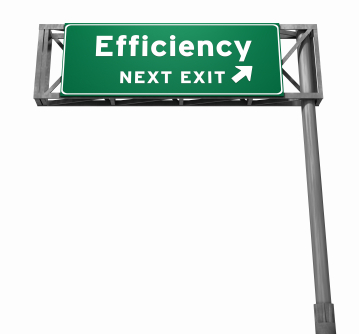 Our recent blog post about “Lean Conversations” connected us to Dan Markovitz of TimeBack Management and provoked a great dialogue about increasing our own productivity and that of white collar or "knowledge workers" in general. Dan’s slogan “working at the intersection of personal productivity and lean manufacturing” really captures his offering. For those of you interested in looking at office productivity through the eyes of "lean," we urge you to check out Dan’s blog posts.
Our recent blog post about “Lean Conversations” connected us to Dan Markovitz of TimeBack Management and provoked a great dialogue about increasing our own productivity and that of white collar or "knowledge workers" in general. Dan’s slogan “working at the intersection of personal productivity and lean manufacturing” really captures his offering. For those of you interested in looking at office productivity through the eyes of "lean," we urge you to check out Dan’s blog posts.
From 2130's perspective the opportunity starts with recognizing that there actually is an opportunity for huge breakthroughs in productivity for all of us. Unless you start your thinking from this possibility, you will never put your energy and intention into capturing the available gains for your associates and yourself. The "urgent" will continue to distract you and draw your focus. As Markowitz says, "you’ll never get off the fire truck!"
The second step is to create a vision of what your work practices would look like if it were the “golden era.” In other words, if your work life were all working perfectly, what would you be getting done and what would happen to all the rest of it? This means you have to identify a clear picture of what is important and valuable and what you are committed to, (what we would call your "Yonder Star"). Easily said, and yet we find many clients who struggle mightily with this seemingly simple notion. The critical point is everything builds from this starting point so if you aren’t willing to take this on, stop reading.
The next step is to track your practices, (see Markovitz’s blog for more on this). Find those things that are necessary, predictable, and/or repetitive, amid all the unique activities in your week. Pull them out and put them on your calendar at times that are convenient, with plenty of lead-time to get them done.
Now compare your vision to all the stuff you have been doing and see if much of it really forwards you on your path to your vision and highest priorities. Now be rigorous and drop as much as possible of what doesn’t fit. This may mean delegating or sub-contracting or it may mean you just stop doing it. Notice who you are afraid of offending or don’t want to disappoint. Is there a way you can re-negotiate? Can you just stop? Why not? What is it costing you to keep doing things that are not leading to your vision? Are you willing to keep paying that price? How much time have you got left?
 Now ask “what’s missing today from my vision today that would be the most valuable thing I could put my attention on?” “What, if I/we got to work on it would give us the greatest leverage in fulfilling the vision?” By leverage we mean getting the greatest result for the least effort and investment of resources. Pick one, and no more than three, activities and build time into your calendar for them. Share your new focus with others so that they ask you how you are doing. They may even look to see how they can support you! That’s real accountability – holding yourself accountable in a public way through your declarations.
Now ask “what’s missing today from my vision today that would be the most valuable thing I could put my attention on?” “What, if I/we got to work on it would give us the greatest leverage in fulfilling the vision?” By leverage we mean getting the greatest result for the least effort and investment of resources. Pick one, and no more than three, activities and build time into your calendar for them. Share your new focus with others so that they ask you how you are doing. They may even look to see how they can support you! That’s real accountability – holding yourself accountable in a public way through your declarations.
Start practicing your new design. It will take practice to break your old habits and build sustainable new ones. It does take the initial effort of the analysis above and building a new practice, but the outcomes will be worth it.
Let us know how you are doing!
From Delusional to Powerful Leadership Language
 Many of the statements and conversations that pass for normal today are filled with words and phrases that have no power and fill the conversational space with the false implication of action. This type of communication seems to keep the speaker from being present to his or her own experience and commitment, (or, more likely, lack thereof).
Let’s start with the word "like." Admittedly this overused word is mostly in the younger set. It seems to be a substitute for being articulate enough to share one’s own experience accurately and authentically. As an example, the phrase “it’s like I’m cold,” - does that mean you are? You aren't? Why not just state “I am cold?” Including "like" seems to allow a lot of talk without much real connection to personal experience. The words speak to an experience that is similar or "like," rather than a statement that owns one's physical state in that moment.
Many of the statements and conversations that pass for normal today are filled with words and phrases that have no power and fill the conversational space with the false implication of action. This type of communication seems to keep the speaker from being present to his or her own experience and commitment, (or, more likely, lack thereof).
Let’s start with the word "like." Admittedly this overused word is mostly in the younger set. It seems to be a substitute for being articulate enough to share one’s own experience accurately and authentically. As an example, the phrase “it’s like I’m cold,” - does that mean you are? You aren't? Why not just state “I am cold?” Including "like" seems to allow a lot of talk without much real connection to personal experience. The words speak to an experience that is similar or "like," rather than a statement that owns one's physical state in that moment.
Another set of words and phrases we hear quite regularly are: “try,” “need to,’” “want to,” “should,” “ought to,” and “would be nice if…” Our view is that these, and many more phrases like them, occur constantly in every day management conversations and are worse than meaningless. In fact, it could be said that in these types of conversations both the speaker and the listener are "deluded." They are deluded because there is an implication of action where there will most certainly be none. We call these words and phrases the “said” portion of a statement. Underneath the "said" is that which is “unsaid.” We find the "unsaid" is usually some version of, "but I can’t." For example, the "said might be" - “we should put a budget together on that." The "unsaid" might be, "but we don’t have time.” Another example of the "said" might be - “I’d love to go with you guys." The "unsaid" might be, "but my wife would never stand for it."
The third, even subtler phrasing we hear is some version of “my opinion would be…” or “my idea would be…” Said in this way, the speaker never seems to be questioned and yet, what does he or she mean? “”My idea would be…" but, it turns out what they're saying isn't really their idea? Or is it? Another example is “my opinion would be…" So does that mean it's that person's opinion unless it meets with criticism in which case they’ll change it? As listeners we really don’t know where the speaker stands. It's easy to wonder if the speaker knows their own point-of-view or whether they are just testing the waters to see what is acceptable, popular, or meets with approval from the top of the hierarchy in the conversation.
It seems the culture of many organizations today encourages this type of "soft pedal" speak. It leaves people latitude to shift to what is acceptable and to recover more easily if they "step in it." The issue is that people aren't encouraged to have a real point-of-view, nor are they encouraged to articulate it if they genuinely have one. From a leadership standpoint, we don't believe this builds leadership skills, confidence or a healthy cultural paradigm in which team members can bring all that they are and have to the table.
The antidote to all of this unreal or deluded conversation is taking the risk to say directly and succinctly what you are really experiencing/feeling, what your truth is, what you are committed to, what you promise, and what you can be counted on to do. If you are a leader and you begin to communicate in this way, those around you will recognize the authenticity of it. You will likely build more trust within your team. Particularly if you encourage them to also take on this style of communication. An important key is that it will only succeed if people see that they will not be punished, criticized, embarrassed or shamed for doing it. A strong leader builds a safe container for those around them to bring their best thinking knowing they can articulate it and it will be received with respect even when others disagree.
 If you take this on and find yourself uncomfortable, make note of what your mind is saying is going to happen to you or how your internal dialogue is criticizing you. Use your self-awareness skills and you will likely find what's stopping you is a limiting belief. Once identified, you can go to work on letting go of it. Check out Kimberley Heart or Morty and Shelly Lefkoe if you need help working through your limiting beliefs.
If you take this on and find yourself uncomfortable, make note of what your mind is saying is going to happen to you or how your internal dialogue is criticizing you. Use your self-awareness skills and you will likely find what's stopping you is a limiting belief. Once identified, you can go to work on letting go of it. Check out Kimberley Heart or Morty and Shelly Lefkoe if you need help working through your limiting beliefs.
To become a clear, powerful, and intentional leader, listen to your statements over the next few days and make a record of all the times you say things from one or more of the above groupings. You probably have your own favorite versions of each! If you are having trouble self-observing, keep going for it and also start recording what you hear others saying. What is the "unsaid" in each conversation? Are you willing to restate your comments with real self-awareness, authenticity, and commitment?
This is an opportunity to multiply your and your team’s productivity and effectiveness!
Opportunity in the Old, Dying Paradigm Called "Jobs"
 While much attention is being paid to the current and expected rate of unemployment in our economy, another longer-term trend is hardly being noticed or measured. Over the last several decades the number of people working as freelancers, consultants, and contractors has risen to 20 - 23% of U.S. workers and is expected to continue to grow. Fast Company magazine talked about it back in a December 1997 article as the “Free Agent Nation” and urged everyone to wake up to the new reality.
For our client companies, this trend is great news as it means you can hire highly qualified talent for many of your needs on a short-term, project basis. You can have top quality talent that you can’t afford and don’t need on a regular, full-time basis as virtual members of your teams. This gives you more ability to focus on what you do best while outsourcing many important functions that are not really part of your core competence. If you do it well, you will soon discover the advantages and learn to base most, if not all, relationships around contracts for performance.
While much attention is being paid to the current and expected rate of unemployment in our economy, another longer-term trend is hardly being noticed or measured. Over the last several decades the number of people working as freelancers, consultants, and contractors has risen to 20 - 23% of U.S. workers and is expected to continue to grow. Fast Company magazine talked about it back in a December 1997 article as the “Free Agent Nation” and urged everyone to wake up to the new reality.
For our client companies, this trend is great news as it means you can hire highly qualified talent for many of your needs on a short-term, project basis. You can have top quality talent that you can’t afford and don’t need on a regular, full-time basis as virtual members of your teams. This gives you more ability to focus on what you do best while outsourcing many important functions that are not really part of your core competence. If you do it well, you will soon discover the advantages and learn to base most, if not all, relationships around contracts for performance.
For you folks who are out in the market, it means opportunity, if you are willing to create the right attitude and practice a few key disciplines. A Wall Street Journal article Monday, February 8, 2010, entitled How to Succeed In the Age of Going Solo, by Dr. Richard Greenwald is a useful guide.
Whether you are still employed or have recently been given your freedom, realize that your old world of stable employment with full-time jobs and defined career paths is dying. We originally addressed this isssue in our post on May 18th, 2009 about Mike Cook’s book Thrive: Standing On Your Own Two Feet in a Borderless World, in which Mike urges you to recognize and shift your paradigm about employment from one of "entitlement" to one of "engagement." He offers the formula: Technical Competence + Collaborative Skill + Good Reputation = Potential Performance as a guide on your new path.
Dr. Greenwald provides specific actions to take along with a valuable discussion around each one of the following key steps:
1) Think long-term – take on your new life as you would any profession
2) Pick the right skills and keep them fresh – keep educating yourself
3) Join a network – from social media to shared office space, find ways to connect with others with common interests
4) Have your own space – most need space away from the activities and seductions at home
5) Think like an entrepreneur –set yourself up as a business with a clear vision, mission, values, business plan, marketing program, & accurate financial statements
 To the wise counsel of these two authors we add "enjoy your newfound freedom!" You have escaped and are in a new world where your creativity and passion need have no bounds. You can work to your highest value. In our firm, we challenge our associates to “be all you can be, fully self-expressed, and let the world choose how much of you it wants and the price it is willing to pay for your gifts. You are the offering. The world has waited for eons for your arrival, get busy.”
To the wise counsel of these two authors we add "enjoy your newfound freedom!" You have escaped and are in a new world where your creativity and passion need have no bounds. You can work to your highest value. In our firm, we challenge our associates to “be all you can be, fully self-expressed, and let the world choose how much of you it wants and the price it is willing to pay for your gifts. You are the offering. The world has waited for eons for your arrival, get busy.”
Lean Conversations For Productivity Breakthroughs
 Let's talk about a set of ideas we have been evolving for several years that we call Lean Conversations. The fundamental notion is that academicians, consultants, leaders, and managers in our culture have focused on and accomplished tremendous gains in productivity through process improvement, supply chain management, IT, and a host of manufacturing concepts including Lean Manufacturing. The area that has been largely overlooked as an opportunity for improvement in productivity is the friction and waste that occurs in the conversations people have with each other as they go about their daily work together. By friction and waste we mean the upsets, resistance, broken promises, undelivered communications, failed intentions, etc., etc. (You get the picture.)
We have long believed the single biggest key to productivity gains in our economy today is to identify and clear upsets, first in ourselves, and then in others. Over many years with our clients we have conducted a sort of "informal qualitative survey," by asking them, " if people in your organization just came to work, did their jobs, and went home without having upsets, issues with each other, their work, etcetera, what time could you go home?" Consistently we would hear they could go home between 10:30 and 11:00 a.m. This answer used to surprise us until we heard it over and over
Let's talk about a set of ideas we have been evolving for several years that we call Lean Conversations. The fundamental notion is that academicians, consultants, leaders, and managers in our culture have focused on and accomplished tremendous gains in productivity through process improvement, supply chain management, IT, and a host of manufacturing concepts including Lean Manufacturing. The area that has been largely overlooked as an opportunity for improvement in productivity is the friction and waste that occurs in the conversations people have with each other as they go about their daily work together. By friction and waste we mean the upsets, resistance, broken promises, undelivered communications, failed intentions, etc., etc. (You get the picture.)
We have long believed the single biggest key to productivity gains in our economy today is to identify and clear upsets, first in ourselves, and then in others. Over many years with our clients we have conducted a sort of "informal qualitative survey," by asking them, " if people in your organization just came to work, did their jobs, and went home without having upsets, issues with each other, their work, etcetera, what time could you go home?" Consistently we would hear they could go home between 10:30 and 11:00 a.m. This answer used to surprise us until we heard it over and over  again. Let’s allow for gross overstatement and cut that savings in half. Even with this modification it appears there is at least two to four hours of time savings available for the leaders, (and presumably everyone else in the organization), if there were less upsets, less confusion and fewer issues in people's interactions with each other. Bottom line, this means ther are potentially enormous opportunities for gains in productivity right in front of us, largely unnoticed, (or framed in that way), and largely unleveraged.
again. Let’s allow for gross overstatement and cut that savings in half. Even with this modification it appears there is at least two to four hours of time savings available for the leaders, (and presumably everyone else in the organization), if there were less upsets, less confusion and fewer issues in people's interactions with each other. Bottom line, this means ther are potentially enormous opportunities for gains in productivity right in front of us, largely unnoticed, (or framed in that way), and largely unleveraged.
We have written a white paper on this subject which we are making available as a free download in this blog post and, (which we will also post on our website in the Articles section), with ideas as to how you can get started reducing the friction and waste in the conversations in your organization.
We invite you to get your free download here [Download].pdf, study it, and take on the practices that most apply to you. Please comment on this post, add to our ideas in the white paper and let us know what you think. Let’s start an open source movement for Lean Conversations!
How a Military Training Process Can Help You Lead
 Being powerful in translating intentions into reality and sustaining them requires presence and adaptability in the face of life’s circumstances – circumstances that can change every moment. Where can we turn for tools to support ourselves?
The United States military has long taught our special ops teams and fighter pilots a thought process called the OODA Loop. These teams function in relatively small units who have large assignments with very limited time and resources. They train incessantly and plan their missions in incredible detail. Yet, no plan survives its collision with reality and conditions in the field often differ from those on the planning table.
Being powerful in translating intentions into reality and sustaining them requires presence and adaptability in the face of life’s circumstances – circumstances that can change every moment. Where can we turn for tools to support ourselves?
The United States military has long taught our special ops teams and fighter pilots a thought process called the OODA Loop. These teams function in relatively small units who have large assignments with very limited time and resources. They train incessantly and plan their missions in incredible detail. Yet, no plan survives its collision with reality and conditions in the field often differ from those on the planning table.
Adherence to the original plan would sometimes mean immediate capture or death and certain failure. Given their commitment, failure is not an option and "all or nothing" is often the choice. They must be able to make sometimes dramatic adjustments to achieve mission objectives and extract themselves with minimal to no casualties.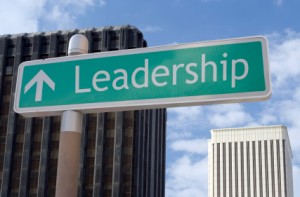
The OODA Loop thought process is an excellent antidote to holding onto the way it was supposed to be, the resources they were supposed to have, and the unfairness of the situation. The acronym simply means:
1) Observe the actual “ground truth” – the way that it is and the way that it isn’t rather than how it was supposed to be. 2) Orient to the actual situation, the observable roadblocks and potholes, the unknowns, and the resources available. Consider the options and strategies that are available. 3) Decide on a path and how long you can go before reorientation is required. 4) Act on your plan 5) Immediately start the process over
In Organizational Development circles the Action Research people would be most comfortable with this thought process.
In your world, how can you apply this simple, clear process to return yourself to working on your purpose and priorities? How can you use to deal with the "Tyranny of Push Content" we addressed in our last post? How can this OODA loop concept benefit your leadership development?
Dealing With The Tyranny of "Push Content"
 Are you overwhelmed with the "tyranny" of emails, newsletters, Facebook and LinkedIn updates, tweets, and phone messages coming at you by the hour? Do you have a feeling of guilt that somehow you are accountable for responding to all of them, even though you didn’t ask for most of them in the first place? Is the e-stack in your inbox getting deeper and deeper? Do you feel like a slave to your Blackberry or iPhone? Are you spending longer hours responding and giving yourself less quiet time?
Virtually everyone we work with is concerned about this issue, not only for themselves but also for those who work with and for them. If everyone is sending and responding to the stuff shoved at them all day, when is there time to think and be proactive and who is doing the work?
Are you overwhelmed with the "tyranny" of emails, newsletters, Facebook and LinkedIn updates, tweets, and phone messages coming at you by the hour? Do you have a feeling of guilt that somehow you are accountable for responding to all of them, even though you didn’t ask for most of them in the first place? Is the e-stack in your inbox getting deeper and deeper? Do you feel like a slave to your Blackberry or iPhone? Are you spending longer hours responding and giving yourself less quiet time?
Virtually everyone we work with is concerned about this issue, not only for themselves but also for those who work with and for them. If everyone is sending and responding to the stuff shoved at them all day, when is there time to think and be proactive and who is doing the work?
When we engage clients in conversations for solutions around this issue we hear several categories of reasons why they are complaining yet not able to get a handle on this:
1) Fear & defensiveness. There is a message in the stack that has a real zinger in it and they can’t take the risk of missing it. Key people will judge them harshly as being non-responsive or irresponsible.
2) Beliefs & judgments. "Good people" answer all their emails and messages. If they were just more organized t hey would have time to be successful at responding to everything.
hey would have time to be successful at responding to everything.
3) Addiction. They are hooked on Facebook, Twitter and the like.
4) Absence of clarity. Vision, goals and priorities are subsumed by the sheer onslaught of “incoming.” “What I started out to get done when I headed for the office was lost within a half-hour after I got there.”
To me, (and I struggle mightily with this as well), the antidote is:
1) Remind myself that I did not ask for much of the incoming and never promised to answer it.
2) Refocus on my strategic priorities regularly throughout the day and ask if what I’m doing is forwarding any of them.
3) Choose to let the email and networking site updating slide and just sit with the discomfort.
4) Keep looking for practical processes that support my intention to be the most productive I can be while also being reasonably responsive.
5) Insist on setting out quiet times and free times to think, relax, and restore, even if I can only fit in a 15 minute break at times.
6) Insure I get at least my minimum exercise and yoga practice in.
How do you handled the onslaught of incoming? What practices and processes are you employing to keep yourself sane, productive, and on purpose?
